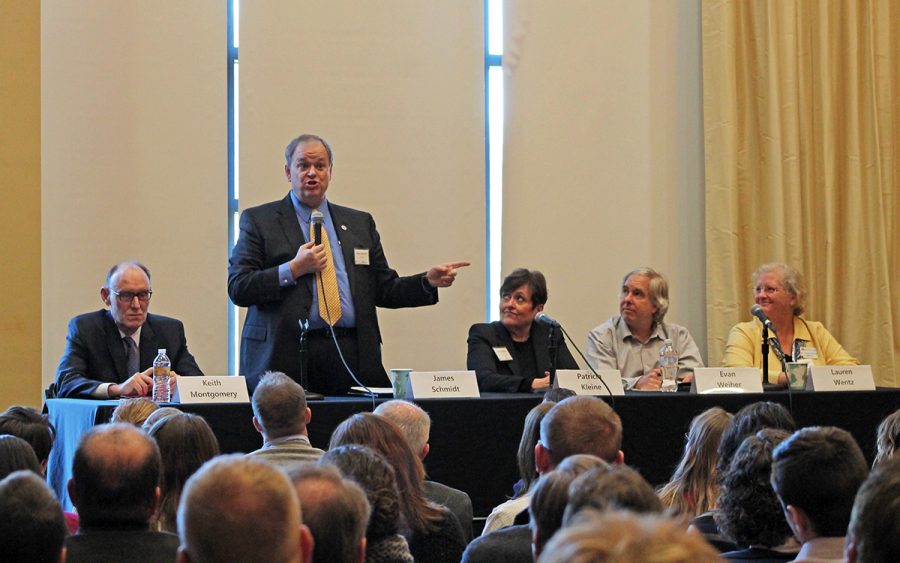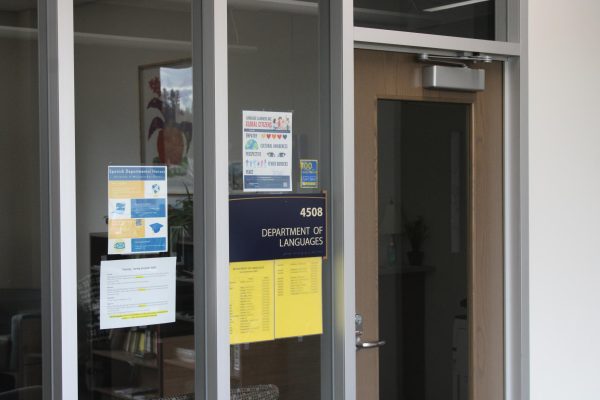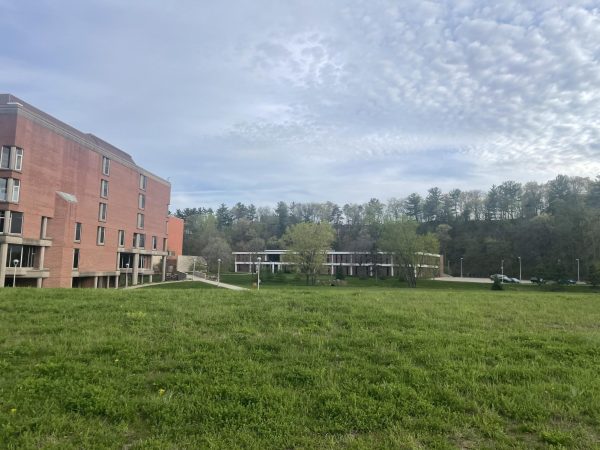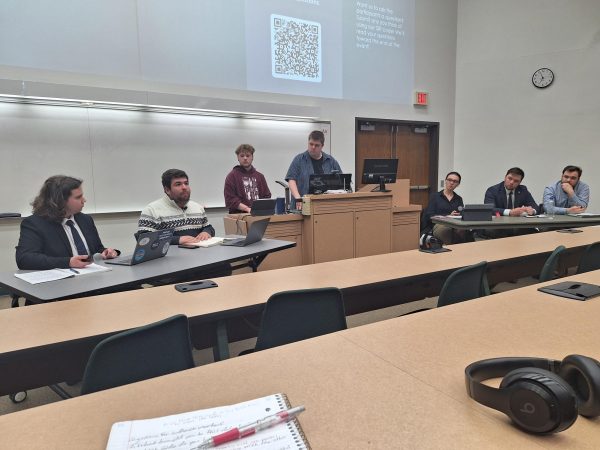Serving students remains priority goal as merger moves forward
UW-Barron County visited UW-Eau Claire last Thursday where faculty and students were able to ask questions regarding the realignment during an open forum
More stories from Rachyl Houterman
Photo by Sam Farley
A panel of shared governance leaders led the open forum in the Dakota Room last Thursday. Pictured from left to right is Keith Montgomery, regional executive office and dean; UW-Eau Claire Chancellor James C. Schmidt; Patricia Kleine, provost and vice chancellor of academic affairs at UW-Eau Claire; Evan Weiher, chair of UW-Eau Claire university senate; and Lauren Wentz, an associate biology professor at UW-Barron County.
UW-Barron County is looking for stability, and UW-Eau Claire remains committed to preserving the mission of serving students as shared governance works to implement the UW System restructuring, leaders from both institutions said during an open forum last week.
Barron County faculty, staff and administrative leaders visited Eau Claire last Thursday to continue discussion and planning for the merger. An open forum provided students and faculty of both institutions the opportunity to ask questions they may have about the new partnership.
Eau Claire’s Chancellor James C. Schmidt opened the forum with comments reassuring the crowd it’s not his intention to make the Rice Lake campus a “small version of UW-Eau Claire.” Instead, he intends to keep the “unique missions” of each institution.
“We’re stronger together if we keep our distinctiveness,” Schmidt said.
There are many things Eau Claire can learn from Barron County, Schmidt said. For example, he pointed to Barron County’s relationship with Somali and Native American populations.
Rapid Action Task Forces will help to make the realignment smoother by prioritizing what needs to be done before the restructuring is officially implemented next summer, Schmidt said.
“We understand we’re not going to be perfect. We’re not looking for perfect yet, we’re looking to operate on July 1,” Schmidt said.
Speaking to when the student databases from the two campuses will be consolidated, Patricia Kleine, the Eau Claire provost and vice chancellor of academic affairs, said that task won’t be completed in time to meet the July deadline.
Keith Montgomery, the regional executive officer and dean, also sat on the panel and spoke to Barron County’s desired results from the merger.
“We want to continue to maintain access,” Montgomery said. “That’s very important to the community.”
Overall, Montgomery said, Barron County is looking for stability. The two-year college has seen a 35 percent drop in enrollment since 2010, something Schmidt said he hopes to revive as part of the new partnership. Montgomery said he believes more stability will come from the restructuring.
Bailey Roche, an Eau Claire student senator and Residence Hall Association (RHA) liaison, said she knows students who are confused about the merger and aren’t sure where to go for more information.
In response, Schmidt said there is a page on the university website underneath the “About us” tab that has updates specific to the Barron County merger. There is also the statewide website that provides information about the entire system restructuring and allows students and faculty to submit questions about it.
In regards to curriculum, Schmidt said students from both institutions shouldn’t expect to see any changes as it has already been set for the next year.
Responding to a rumor that the new realignment will cause enrollment declines at Eau Claire, which could see potential students choosing Barron County instead, Schmidt said he wasn’t too concerned about enrollment levels.
“If you do what’s right for students, the rest takes care of itself,” Schmidt said. “So if in the end a student feels that Barron County is their best place to get started, then I support that.”
“Some of our sister institutions are concerned about their enrollment, and I don’t have a lot of patience for that,” Schmidt said. “We need to serve students. If you start with that and what’s in their best interest, students will come to you once they realize they’re being served well.”
Though some questions remain unanswered for now, Schmidt said he believes the realignment is a “great opportunity for both institutions” which are “going to learn a lot.”
“You know, we’d be bored if we weren’t learning something,” Schmidt said. “We’re lifelong learners, so we’re looking forward to a great start.”











